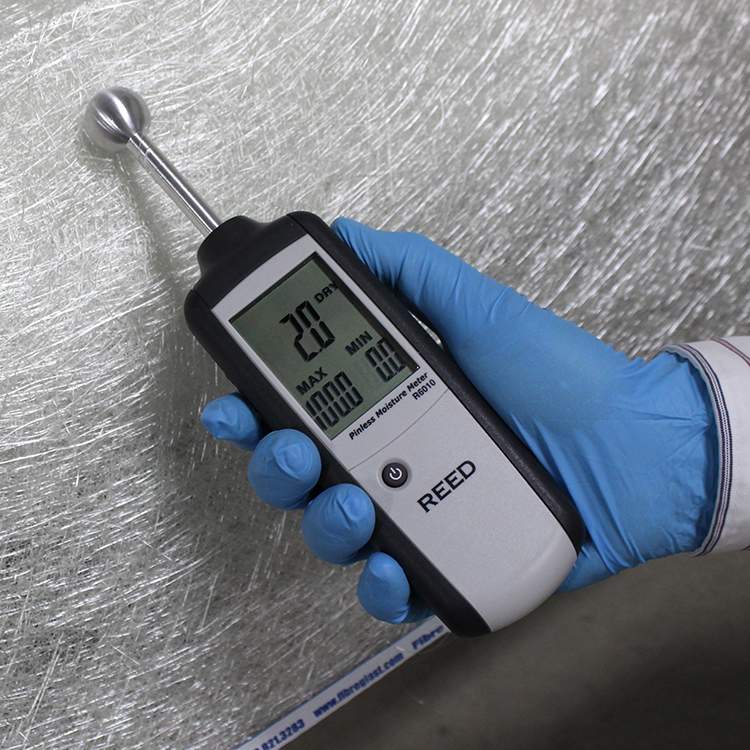The Scientific Research Behind Moisture Meters: Just How They Function and Why They're Necessary
Look Into the Globe of Moisture Meters: Whatever You Required to Know
In the world of moisture meters exists a world of accuracy and usefulness that usually goes undetected. These devices, while seemingly simple, hold a riches of information that can significantly influence different industries and applications. Recognizing exactly how moisture meters run, the various types available, and their varied uses can lose light on their value in ensuring top quality and effectiveness. By discovering the complexities of dampness meters, one can discover a valuable device that goes beyond simple dimension, providing understandings that can make a significant difference in countless fields.
Exactly How Moisture Meters Work
Moisture meters run by measuring the electrical conductivity or capacitance of products to establish the moisture material present. These meters are vital devices across various markets, consisting of woodworking, farming, and construction. By using various techniques such as pin-type or pinless modern technology, dampness meters give accurate readings that help professionals make informed decisions.
Pin-type dampness meters function by placing the sharp pins into the material being examined. On the various other hand, pinless wetness meters utilize electromagnetic signals to scan a larger area without creating any type of damage to the material's surface area.
No matter of the technique used, wetness meters play an important role in preventing concerns such as mold and mildew growth, architectural damages, or product issues triggered by excess dampness. Comprehending how these meters job is necessary for making sure the quality and honesty of materials in various applications.
Sorts Of Moisture Meters
Offered the important role dampness meters play in different sectors, it is important to understand the various types available to specialists for precisely analyzing wetness degrees - Moisture Meter. There are mainly 2 primary sorts of moisture meters: pinless and pin-type dampness meters

On the other hand, pinless wetness meters use electro-magnetic sensing unit plates to scan a larger location of the material without triggering any damages. This kind is appropriate for promptly scanning big locations and is commonly utilized for flooring, wall surfaces, and ceilings. Pinless meters are convenient for taking analyses on completed surfaces without leaving any type of noticeable marks.
Both sorts of dampness meters have their advantages and are selected based on the certain demands of the work available. Recognizing the differences between these kinds this article is crucial for professionals to make precise wetness assessments.
Applications Throughout Industries
Construction experts rely on wetness meters to assess the dampness levels in structure products like concrete, wood, and drywall, which is essential for keeping structural honesty and preventing problems like rot or mold and mildew. The flooring sector utilizes wetness meters to measure the dampness content in subfloors prior to mounting various floor treatments, preventing expensive problems due to excess moisture. In the food market, moisture meters are utilized to check and control moisture levels in items such as grains, nuts, and dried out fruits to keep freshness and high quality.
Tips for Making Use Of Dampness Meters
Utilize the moisture meter's calibration settings to ensure accurate analyses when gauging the moisture material in various materials. In addition, make sure the meter is set to the right wetness array for the product you are gauging to obtain the most precise results.
When making use of a pin-type dampness meter, place the pins to the suitable depth recommended for the product being checked. This ensures that the moisture analyses are drawn from the appropriate depth within the product, supplying a much more accurate depiction of its wetness content. For pinless dampness meters, keep in mind to preserve proper call with the material's surface to obtain trustworthy readings.
Regularly examine and replace the batteries in your dampness meter to stop inaccurate analyses due to reduced power. When not in use to extend its life-span and maintain its precision, Shop the meter in a safe and completely dry location. By adhering to these pointers, you can make best use of the performance of your wetness meter and get precise wetness web content measurements across different products.
Upkeep and Calibration
To guarantee the accuracy of moisture content dimensions, normal upkeep and calibration of the dampness meter are necessary actions in its appropriate functioning. Calibration changes the moisture meter to guarantee that it provides reliable and consistent outcomes.
Calibration ought to be executed regularly, especially if the dampness meter my site is used regularly or in vital applications where precise dimensions are required. By keeping and calibrating the dampness meter consistently, individuals can rely on the accuracy of the wetness content measurements acquired.
Final Thought

Finally, moisture meters play a vital duty in various markets by properly gauging the moisture content of materials. Comprehending just how these devices work, the different kinds readily available, and correct upkeep and calibration are important for acquiring trustworthy outcomes. Whether in construction, manufacturing, or agriculture, making use of moisture meters helps guarantee high quality control and effectiveness in processes.

In final thought, moisture meters play an essential role in numerous sectors by precisely measuring the dampness web content of materials.